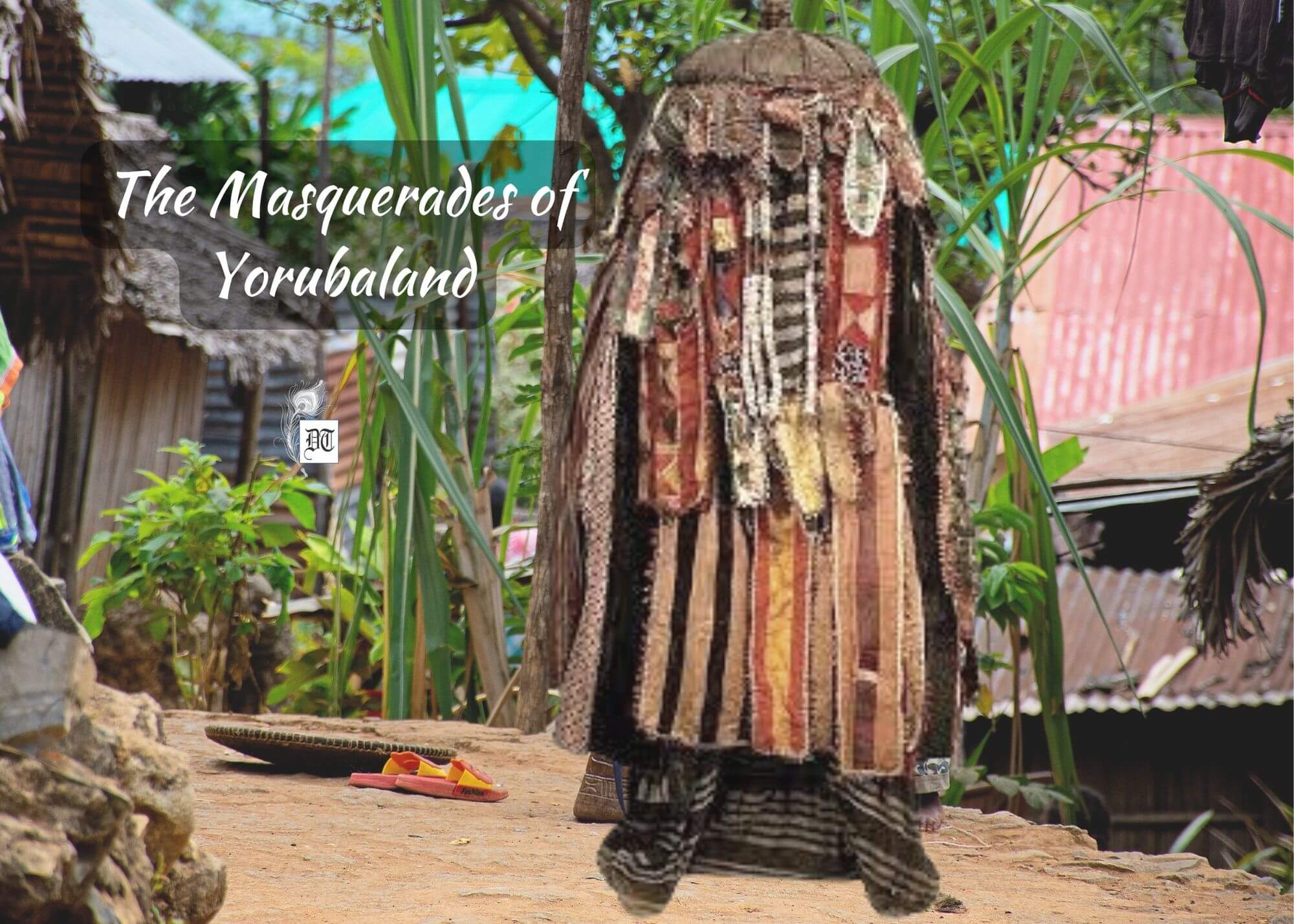Reading Time: 2 minutes
Masquerades have supernatural powers, and the costumes and masks are considered totems of the Nigerian tribes, states Swati – exclusively for Different Truths.
À ń pe gbẹ́nàgbẹ́nà ẹyẹ àkókó ń yọjú – Old Yoruba proverb
(A sculptor is summoned, and the woodpecker shows up.)
A masquerade ceremony is a cultural or religious event involving wearing masks. Masquerades are rooted in the culture and traditions of the different tribes in Nigeria, and they are different from each other in terms of functions, structures, and festivals. E.g., a masquerade displayed during the harvest period differs from the one displayed during carnivals or during the king’s death.
It is a part of Nigerian tradition recognised by society…
It is a part of Nigerian tradition recognised by society and passed down from generation to generation.
Masquerades are believed to have mystical powers, and their clothes and masks are seen as totem – sacred objects which an ordinary human being should not touch. There is another belief that they represent the gods and ancestors.
We will talk about some of the most respected masquerades in Yorubaland.
1. Eyo Masquerade: These originated in Lagos state and represented the spirit of the dead and are referred to as “Agogoro Eyo”, which means “tall Eyo”. Legend says the Eyo came because of the need to protect a deity in the land from hoodlums who wanted to cart away with it.
2. Alapansanpa Masquerade: These are known for their annual visit to Olubadan’s palace in June. It is said that if the Alapansanpa masquerade does not go to the Olubadan’s palace, there will be no peace and prosperity in the land.
3. Atipako Masquerade: The “Atipako” masquerade is popularly known as a ‘load-carrying’ masquerade that women accompany. Atipako masquerade comes out yearly in June and spiritually cleanses the community.
The Agemo masquerade group showcase their skills…
4. Agemo Masquerade: The Agemo masquerade group showcase their skills and performs magical tricks during ceremonies while the drummers beat their drums and sing songs to entertain people. “Agemo” is usually celebrated among the Ijebu in a weeklong ceremony.
5. Egungun Masquerade: The “Egungun” masquerade is also known as the masked ancestors of the Yoruba land, which assures the people that the dead are among the living. The Egungun masquerade is usually dressed in colourful attires with a whip, which is used to flog anyone in the way of the spirit.
6. Obadimeji Masquerade: There is a belief that any member of the family that abandons the family tradition of worshipping this masquerade will be in danger for the rest of his/her life. The “Obadimeji” masquerade’s outfit is usually made with materials like damask, red lace, and other unique fabrics except white.
One similar thing in masquerades is that their faces are not seen; they are covered. Their legs and hands are covered, too, as they adorn footwear and gloves. They hide their faces with masks (sculptures), nets, clothes, and some style their headwear with feathers.
No matter the belief in masquerades, they have significance in African society and play a vital role in social cohesion. However, the initiation processes and how people see the entire masquerade group have recently changed. It can be said that civilisation is one of the many factors contributing to this change by slowly reducing its significance in rural communities in Yoruba land. These traditions that form a social group’s cultural foundation and identity should be preserved and cherished.
Picture design by Anumita Roy

Look forward to continuing enrichment!